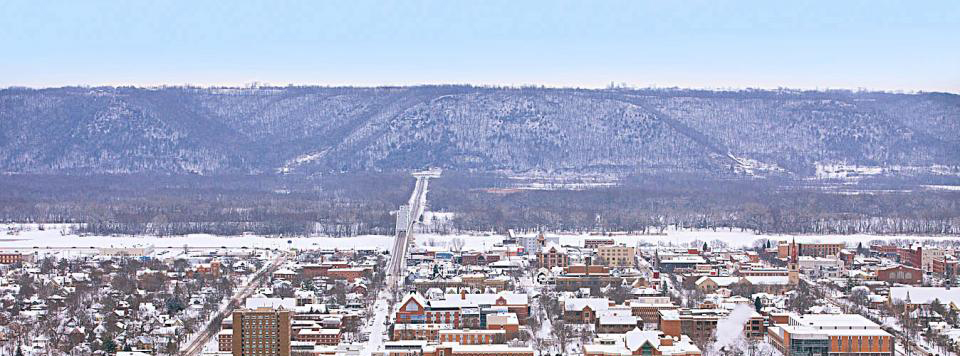Ah, winter in Minnesota. Fresh snowfall, ice fishing, polar plunges, cozy sweaters, hot chocolate and… outsized energy bills? While we expect temperature drops as winter approaches, many households struggle with increased heating and light bills as the season begins. That’s changing in Winona County, thanks to a collaboration between Xcel Energy, Semcac, the City of Winona, Winona County, CERTs, Next Step Partners/Sustain Winona, and the Jefferson Center. In 2017 alone, 197 low-income households served by Xcel Energy in Winona County have received Home Energy Squad visits, which include energy audits, upgrades to LED lightbulbs, water and energy-saving showerheads, programmable thermostats, weather stripping for doors, and more – at no cost to the households.
The collaboration began as part of the ‘Winona Engaged’ grant from the Minnesota Pollution Control Agency (MPCA), where funds were dedicated to increasing energy efficiency among low- and fixed-income households. While figuring out how to set up the audits most cost effectively, the program quickly gained a life of its own. Where Xcel Energy did not have enough staff available to meet the increased demand for home energy audits in rural Minnesota, Semcac did. The catch? Semcac didn’t have the resources to do it for free. Pam Newell, a Product Portfolio Manager for Xcel Energy, knew that the opportunity for the utility to serve their rural customers was too good to pass up and worked with Melissa Feine, of Semcac, to eliminate barriers that prevented the two organizations from working together more efficiently. And so, it was decided: Semcac would do the audits and Xcel Energy would provide financial support for each audit performed from funds designated for energy conservation efforts. Once the working relationship between Semcac and Xcel Energy was ironed out, Winona County and City staff identified the income-qualifying households and helped arrange the appointments.
Newell sees the MPCA grant as the starting point for the remarkable energy conservation work, stating “in figuring out how to meet the grant’s goals, we came to understand the current system very well, developed structural changes, and built connections among the groups doing similar work that vastly improved the outcomes for all.”
Recently, the Winona Housing and Redevelopment Authority (HRA) worked with Xcel Energy and the City to bring energy savings to the agency’s affordable housing. The Home Energy Squad installed energy conserving measures, like LED light bulbs. A visit by the Home Energy Squad is valued at between $200 – $600, based on the condition of the home and the type of visit. The Home Energy Squad was able to visit 170 households associated with Winona’s HRA this year, resulting in an investment in energy efficiency for Winona’s low-income housing stock, valued at between $30,000-$102,000, at no cost to the residents.
From the perspective of Nick Larson, the City of Winona’s Community Development Specialist, “the collaboration between Xcel Energy, the HRA, and the City of Winona has been very exciting and rewarding, since the delivery of energy saving programs to Winona’s highest-need households benefits both the residents and the community as a whole.” According to Larson, continued collaboration is on the horizon: “to further the reach of Xcel Energy’s energy savings programs, the City will be incorporating their programs into our own home rehabilitation programming, providing a greater positive impact and allowing households to save more of their earned income.”
This particular collaboration between the City of Winona and Xcel Energy aligned with other energy work: the City recently approved an energy action plan developed with Xcel Energy’s Partners in Energy (PiE) offering. The PiE plan outlines two overarching energy goals for the City of Winona: to reduce energy use 10% by 2025 and achieve a 100% reduction in non-transportation energy-related greenhouse emissions (become carbon-neutral) by 2050. With collaborations like these, the community is well on its way to a more sustainable, resilient, and affordable future for all residents. And, in the coming months, residents of Winona County will have more time to enjoy those little things—like sledding and a hotdish right out of the oven—rather than worrying about how to pay for wasted energy.
